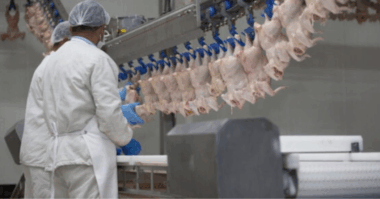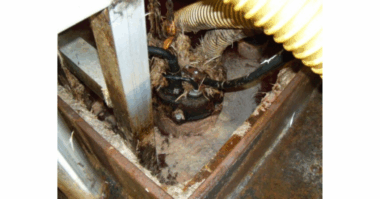The Mont Rouge Olive Estate faced irrigation challenges for its 200 hectares of olive trees amidst recurring power outages in South Africa. A system based on holding dams, gravity-fed drip irrigation and 750 kWp of PV solar panels powering Grundfos pumps has solved the problem. “If all the farms in Africa went this route, it would be Utopia. Not only for Africa, but for the planet,” says owner Pieter Coetzee.
The situation
In the heart of South Africa’s arid Little Karroo, 26 kilometres down a winding, dusty dirt road in a remote mountain valley lies the Mont Rouge Olive Estate. In its good years, the grove – owned and operated by Assegaay Bosch Ranch – harvests 2,100 tonnes of olives, which equates to about 300,000 litres of olive oil and few hundred kilograms of table olives – produced in a small factory onsite.
A patchwork of 120,000 olive trees covers 200 hectares in the valley and hills under rolling, green mountains. Average rainfall is only 150 millimetres per year, but the adjacent Rooiberg mountains get ten times that amount. It is that water that feeds the plantation, in the form of two rivers. The rivers run into holding dams below the farm.
For the past decade or more, the olive farm has been challenged getting that water in a dependable way to its trees. Previously, the ranch pumped water from the lakes up into drip irrigation systems. There was just one rather large problem, explains Pieter Coetzee, Owner of Assegaay Bosch Ranch.
“We were basically up against a failing South African electrical supply situation, where we have what is called ‘load shedding’ in South Africa. It is in fact rolling blackouts,” he says. These blackouts have occurred for more than a decade – every day for two to four hours.
“Lately, we’ve had occurrences where it’s 12 hours a day. It is impossible with the pumping system that we have here – 750 kilowatts – to wet all our olive groves without a true and predictable electricity supply.”
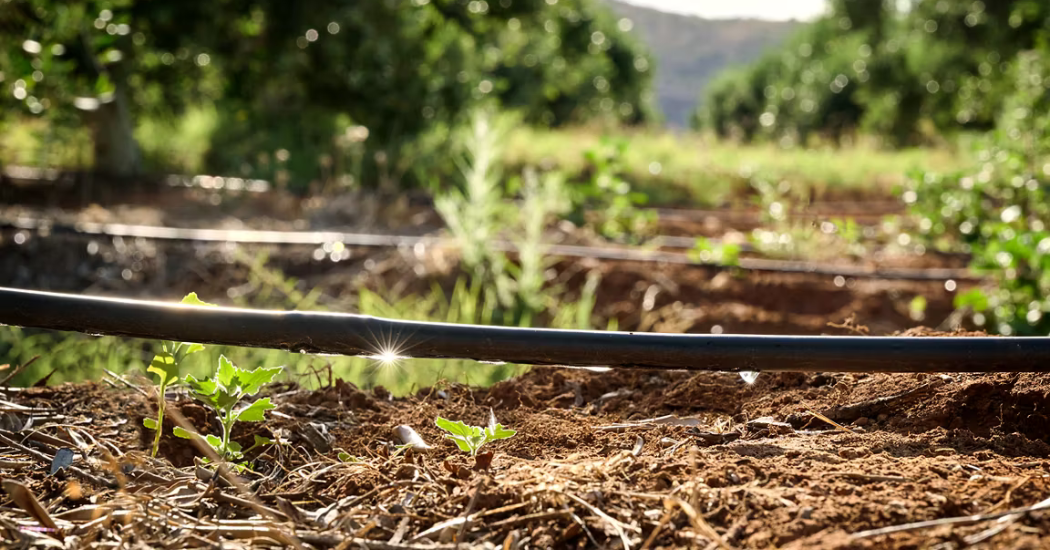
Gravity-fed drip irrigation lines snake through the blocks of olive trees.
If the farm wanted to keep the pumps running, they had to use diesel-driven standby generators. “That is very, very expensive,” says Pieter Coetzee. “It’s just unsustainable.”
Farm Manager Marnus Dippenaar says if they did not run the diesel generators, the trees were only getting about half the amount of water they needed to thrive – and survive.
Pieter says: “Obviously, we couldn’t let our trees die. If we didn’t take emergency measures, most of our groves would have died. What we had to do is to develop a system where we didn’t have to spend zillions on batteries. Hence, we took the decision to move green.”
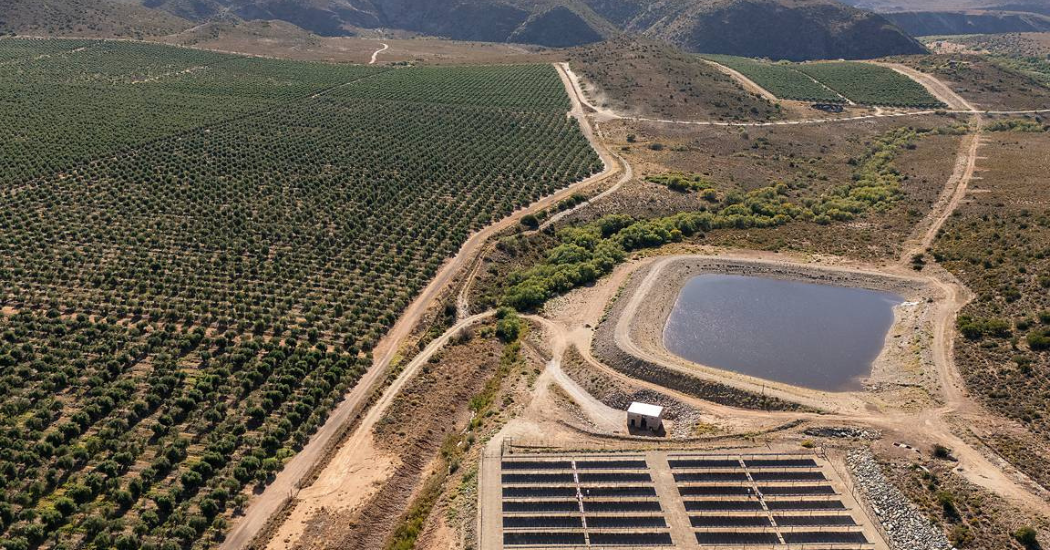 One of the holding dams of water halfway up the farm’s “mountain.” The adjacent solar array powers a Grundfos CR booster pump system that brings the water all the way to the uppermost holding dam.
One of the holding dams of water halfway up the farm’s “mountain.” The adjacent solar array powers a Grundfos CR booster pump system that brings the water all the way to the uppermost holding dam.
The solution
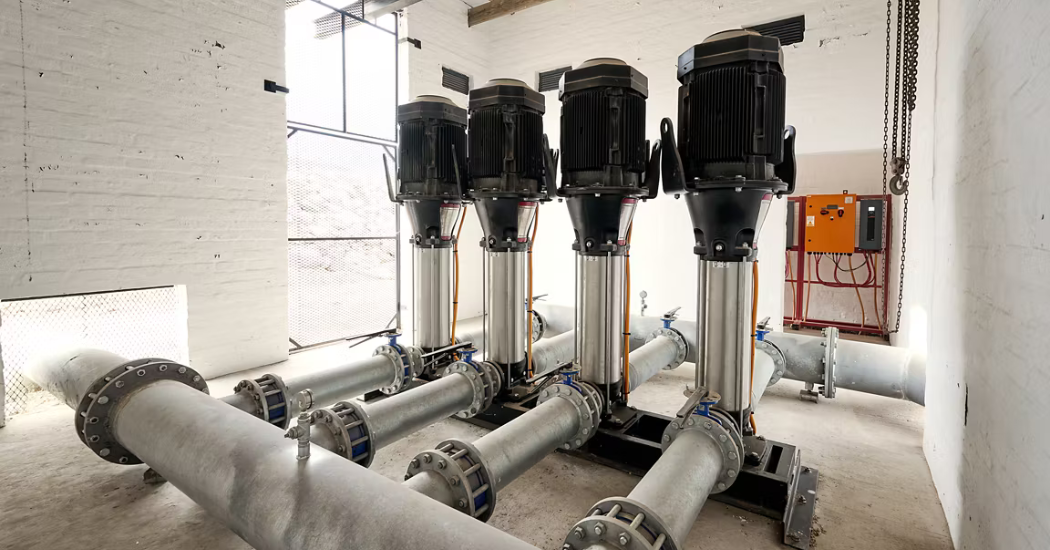 A Grundfos CR boosting system. In the background by the orange AC/DC power cabinet is a Grundfos Renewable Solar Inverter drive that converts the DC solar energy to AC power for the pumps. If there is not enough DC power, the unit switches over to AC grid power.
A Grundfos CR boosting system. In the background by the orange AC/DC power cabinet is a Grundfos Renewable Solar Inverter drive that converts the DC solar energy to AC power for the pumps. If there is not enough DC power, the unit switches over to AC grid power.
The green solution became what is believed to be South Africa’s largest, single-axis-tracker solar-powered irrigation system. Three (and soon four) arrays of photovoltaic (PV) panels provide 750 kilowatts of peak power to Grundfos pumps at holding dams by each array. Every day, the farm pumps 3,000 m3 water from the reservoirs into storage dams midway up the farm and then farther to a large holding dam on top of a hillside at the highest point of the farm. At 50,000-cubicmetres, the man-made lake holds the water equivalent of 20 Olympic-sized swimming pools.
“That plateau dam essentially becomes our battery for the solar system,” says Pieter Coetzee. “The idea is actually very simple. If you’ve got height, you’ve got power. Once we have the water trapped there, it’s just a matter of opening a valve and we can gravity feed all our groves with drip irrigation. It is so simple, it’s actually laughable.”
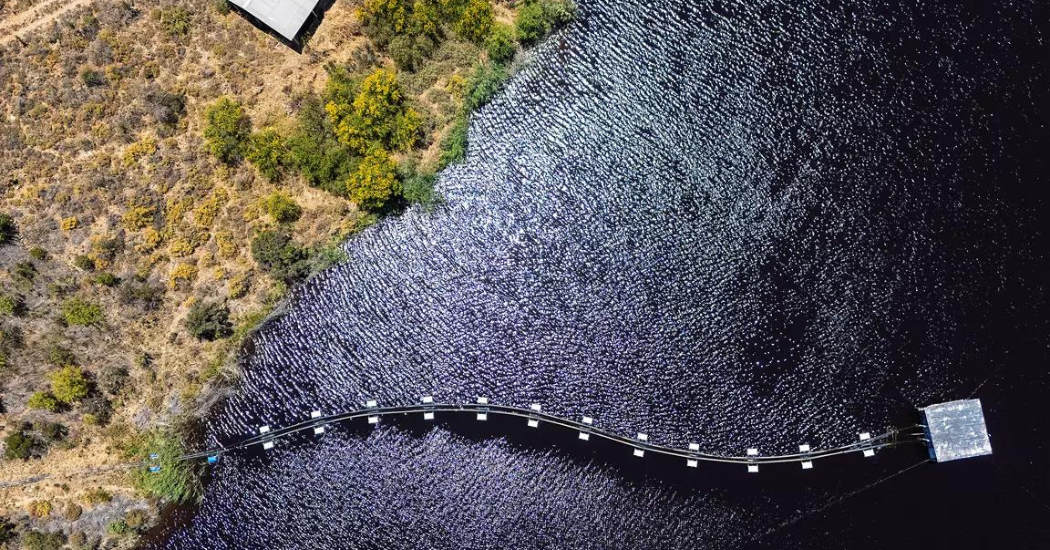 The system
The system
“This farm is 200 hectares of mixed olives and every drop of water that is used to irrigate passes through a solar pump,” says Hannes Van Niekerk, CEO of SAW Africa, the system designer and supplier. “It’s a really easily maintainable system.”
Hannes says that SAW Africa has been using Grundfos solar pumps since 2002 when the SQ Flex was released. For the first many years, it was mainly used for off-grid applications like cattle farming and very small-scale irrigation – around 2 kW. “Today we can build systems that are more than a megawatt (1,000 kW). Basically, the sky’s the limit.”
The solar panels power Grundfos pumps with variable speed drives. The system can work off-grid or in hybrid mode if grid power is also available. “It enables us to pump in areas where traditionally you won’t have any option to pump water. And we can irrigate fields in areas where previously it wouldn’t be possible,” says Gerrit-Jan Cronselaar, Chief Technology Officer at SAW Africa. In the case of Assegaay Ranch, it made it possible to bypass the unreliable grid power during the long daylight hours.
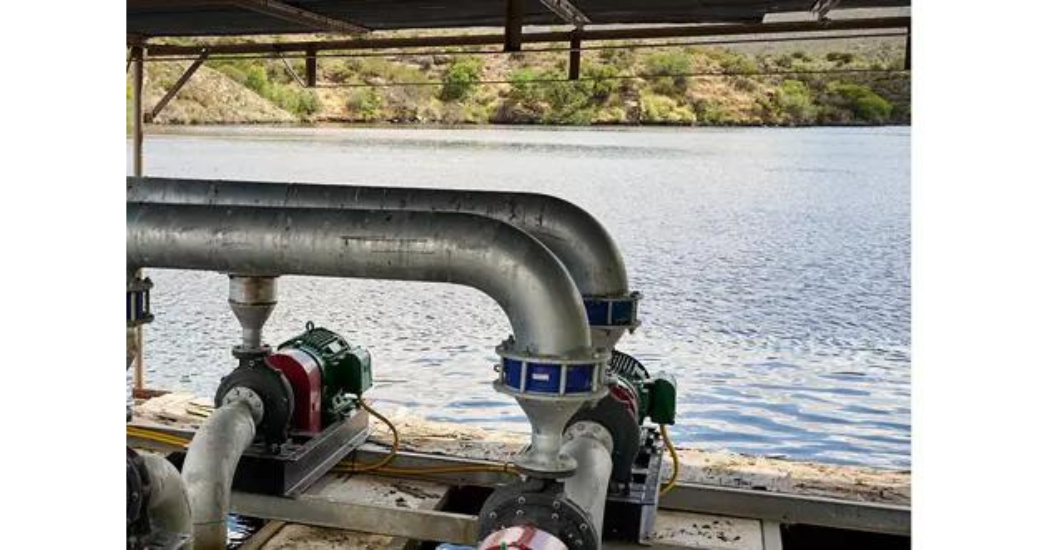 Grundfos NK65-250 end-suction pumps move water from one of the main river reservoirs to a holding dam partway up the farm’s hilly terrain. They operate from a floating structure in the lake.
Grundfos NK65-250 end-suction pumps move water from one of the main river reservoirs to a holding dam partway up the farm’s hilly terrain. They operate from a floating structure in the lake.
What makes the PV system unique at the olive farm is that the solar panels are not installed at fixed angles. “The solution we came up with is using a single-axis tracker,” says Gerrit-Jan. “Your energy production is determined by the angle that you have your solar panel towards the sun. By using a singleaxis tracker, we follow the sun exactly like a sunflower follows the sun throughout the day. And what that translates to is instead of getting six hours’ worth of solar production, we can get 11 hours of full production.” Gerrit-Jan adds that the longer production time increases pump efficiency. “We can have a lower peak demand because we’ve got more hours to pump the water that we need. And that comes to a more cost-effective solution.” In fact, the single-axis tracker allows the farm to get 30% more water during the day than a fixed-type PV panel structure allows.
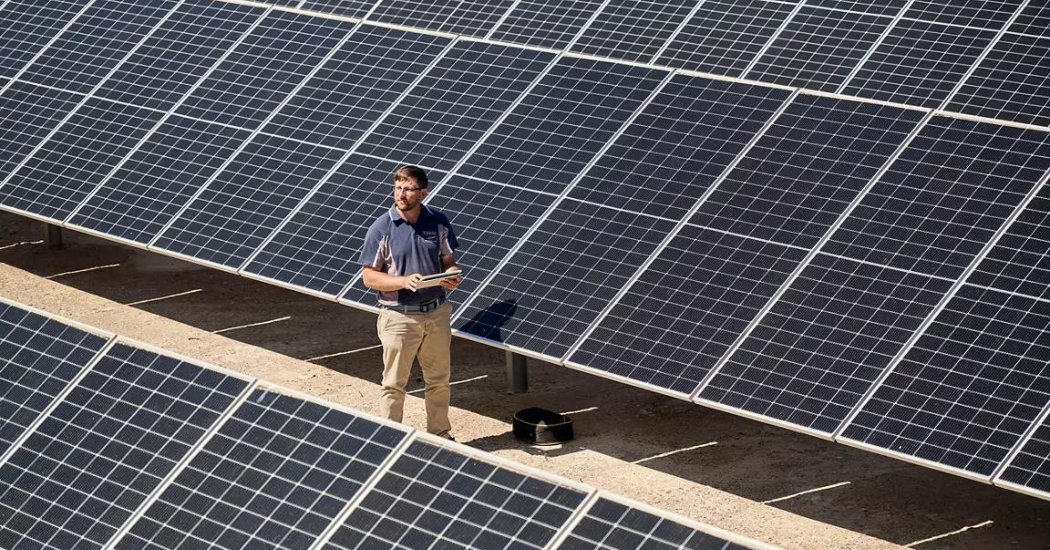
Gerrit-Jan Cronselaar, Chief Technology Officer at SAW Africa
The outcome
The PV irrigation system was installed in 2021. Its benefits can be felt in different ways.
“It’s just lovely. It’s clean. It’s right there on demand,” says Pieter Coetzee. “I think as we stand here today, we can call ourselves certainly carbon neutral – maybe even carbon negative. We cultivate 200 hectares of olives. We produce more electricity than we consume. There’s just no comparison. There’s absolutely no comparison.”
With the system itself, farm manager Marnus Dippenaar says he’s happy the days are over with heavy, regular maintenance. “There’s no more pipe burst,” he says, explaining that when the previous pumps had to start again every time the power came back on, there were vacuum problems, water hammer and more. “There was a pipe burst maybe once or twice a week, and we had to go to fix that every time. But since we put this in, there was one pipe burst and then we fixed the problem and no more. And that is after a year and a half, we’ve got no more problems with pipe bursts in anything.”
Furthermore, the holding dams allow any sediment to sink down to the bottom, meaning the drip irrigation lines are filled with “nice and soft water” and do not clog so easily.
Assegaay Bosch Ranch Farm Manager Marnus Dippenaar, SAW Africa CEO Hannes Van Niekerk and Grundfos Sales Engineer Nigel Thorpe see the olive groves from a lookout point on the hills above.
“You can have a breather,” he says. “You don’t have to worry so much about the water because you will know you’ve got enough water. There’s enough. You can focus on other stuff to do – not the water.”
Pieter Coetzee says, “You can imagine that within the next 20 years, we’re going to have 13 or 12 years of free electricity. That in itself will be a huge saving. And the nice thing, too, is that your solar array and your pumping system move to the top line of your balance sheet. So, it becomes an asset and not a liability, which you otherwise have paying your electricity supplier every month. It just makes absolute sense.”
He continues: “If all the farms in Africa – whether it be a one man show, a bigger commercial farm, or just a subsistence farmer – went this route, it would be Utopia. Not only for Africa, but for the planet.”
A worker in the Mont Rouge Olive Estate factory pours fermented green olives into a bin for delivery to a customer in South Africa.
Grundfos supplied
Grundfos has supplied 12 pumps with variable speed drives for three pumping stations at each solar array – all of which total 750 kilowatts in peak power (750 kWp) – at Assegaay Bosch Ranch. These include large Grundfos NK end suction pumps and a booster set with Grundfos CR95 pumps.
In addition, the pumps are coupled to Grundfos Renewable Solar Inverters (RSIs). These convert the DC power output from the solar panels to AC power supply for pump operation. Additionally, Grundfos PowerAdapt automatically determines which power supply – the utility’s grid or the solar panels – should power the pumps.


